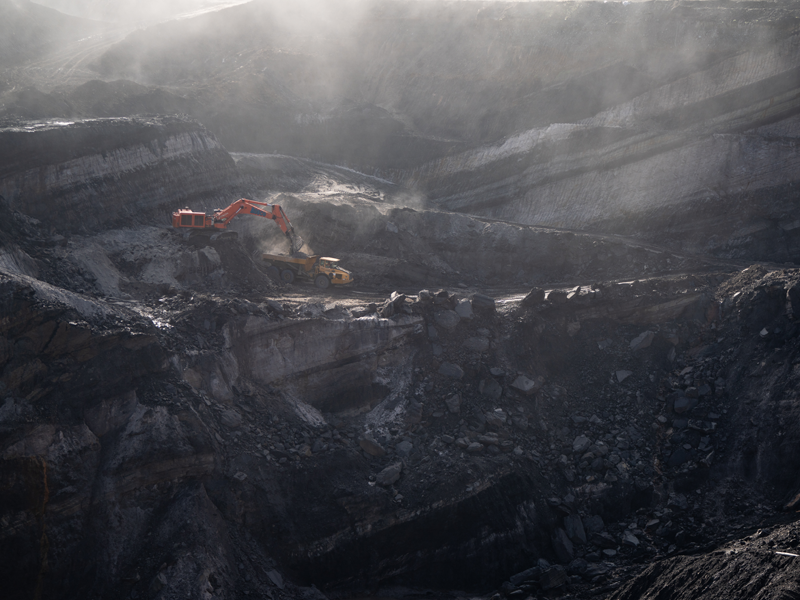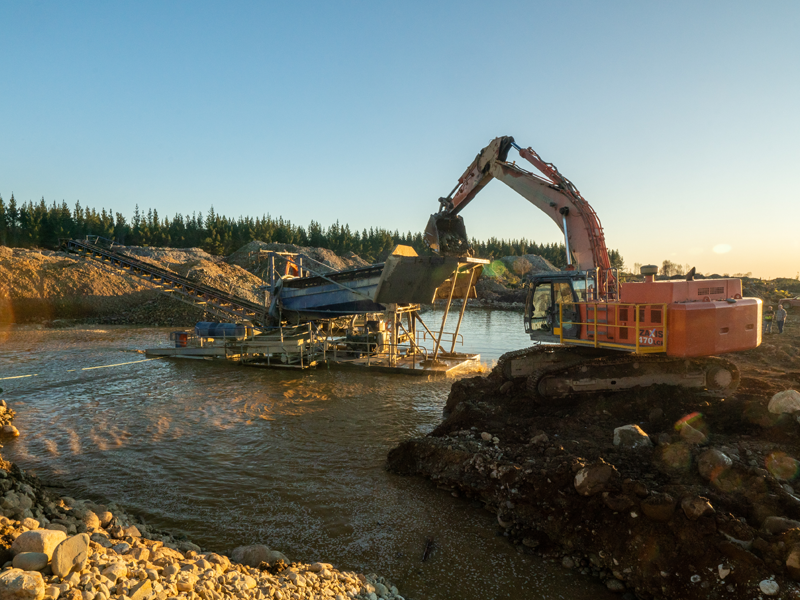Where do people mine on the West Coast?
For people living on the West Coast/Tai Poutini, mining has long been a means of earning a living.
The mineral resources of the West Coast can be found in many places between the main divide of the Southern Alps, all the way down to the coastline of the Tasman Sea, and many places between Kahurangi Point in the north and Awarua Point in the south.
Read below for an outline of where the resources of the West Coast can be found.
The Buller District of the West Coast is home to major coal-producing areas such as the Stockton and Denniston Plateau, and one of New Zealand’s large hard-rock gold fields, Reefton.
Historically and through to the present day Buller has been home to smaller-scale blacksanding and alluvial gold mining operations.
At present mining for coal takes place on the Stockton and Denniston Plateaus north of Westport, and in and around Reefton.
Of about 142 million tonnes of coal produced on the West Coast since mining began in the 1860s, more than 80 million tonnes have been mined from Buller. Most of this coal is premium-quality, and highly sought-after export coal for steelmaking.
OceanaGold’s Globe Progress Mine, which operated just inland of Reefton, stopped producing gold in 2016 and entered its closure and rehabilitation phase, which is still underway. About 200 people were employed at the mine’s peak, which over 10 years produced about 610,000 ounces of gold.
Since Globe Progress ceased production, there have been no large hard-rock gold mines in the Reefton goldfield, though active exploration is underway.

The most advanced exploration project at present is an underground one, led by Federation Mining, to re-establish mining the “Birthday Reef” beneath the historic gold mining township of Waiuta.
The Snowy River project involves tunnelling into the lowest-known part of the reef from 3 kilometres away by constructing twin tunnels.
Federation Mining’s aim is to begin gold production potentially as early as 2024, mining a resource of 700,000 ounces at a rate of 70,000 ounces per year, with a total forecast mine life of 10 years or more.
Buller is also home to areas prospective for heavy mineral sands development, and these resources are in the process of being developed. Westland Mineral Sands has begun production of its heavy mineral concentrates for export from the port of Westport, which contain ilmenite and other minerals, including potentially rare earth elements.
Quarries producing aggregates for roading, infrastructure and construction, as well as limestone for soil conditioning on pasture to boost food production are widespread throughout the Buller District.
The Grey District has been home historically to a substantial amount of the West Coast’s coal production, the Greymouth coalfield having produced about 43 million tonnes of the West Coast’s total of 142 million tonnes of coal since mining began in the 1860s.
Today mining in the Grey District occurs at Roa Mine and Strongman Mine, both of which produce coal from the resources of the Paparoa Range. While historically much of the Paparoa coal has been produced by underground methods, today coal mining in the Greymouth coal field is all opencast.
Mining for gold has also occurred historically in the Grey District, and through to the present day.
This is either alluvial gold mining or black sand mining, and takes place on farmland, cut-over pine forestry land between harvesting and replanting, and on some areas of public conservation land.
Mining of heavy mineral sands on the Barrytown flats (about half an hour north of Greymouth by car) has been considered historically. It is being looked at again by a company called TiGa Minerals and Metals (TiGa being an abbreviation of titanium and garnet), in response to growing international demand, and technology improvements to promote economic recovery. The heavy mineral sands in this area contain ilmenite, garnets, a small byproduct of gold, and, potentially, zircon and rare earth elements.
Quarries producing aggregates for roading, infrastructure and construction, as well as limestone as soil conditioning for pasture to boost food production also operate throughout the Grey District.

Westland District has historically been home to production of much of New Zealand’s gold and greenstone.
The initial goldrushes of 1864 originated just inland of Kumara, and a substantial amount of mining has occurred in the 160 years that have passed since gold was first discovered.
Today, goldmining still occurs – as alluvial and black sand mining – in and around Kumara, Hokitika, Kaniere, Arahura, and Ross.
Pounamu production also largely occurs in Westland as a by-product of alluvial gold mining – the same geological processes that distribute gold in the debris and outwash of the ever rising and eroding Southern Alps also bring pounamu down from the mountains.
In addition to gold and pounamu, quarry operators in Westland produce schist rock sourced from riverbeds such as the Waitaha (located between Ross and Hari Hari), as well as limestone as soil conditioning for pasture, and aggregates and gravels for the construction and infrastructure works that maintain the highway connections between the district and Canterbury via Arthur’s Pass, and with Central Otago via South Westland and the Haast Pass.

Westland District is also prospective for heavy mineral sand resources (as is the case in Buller and Grey) but development of these resources is less imminent. A sizeable garnet resource is located south of Hokitika near Ruatapu, and another resource found south of Fox Glacier near Hunt’s Beach.